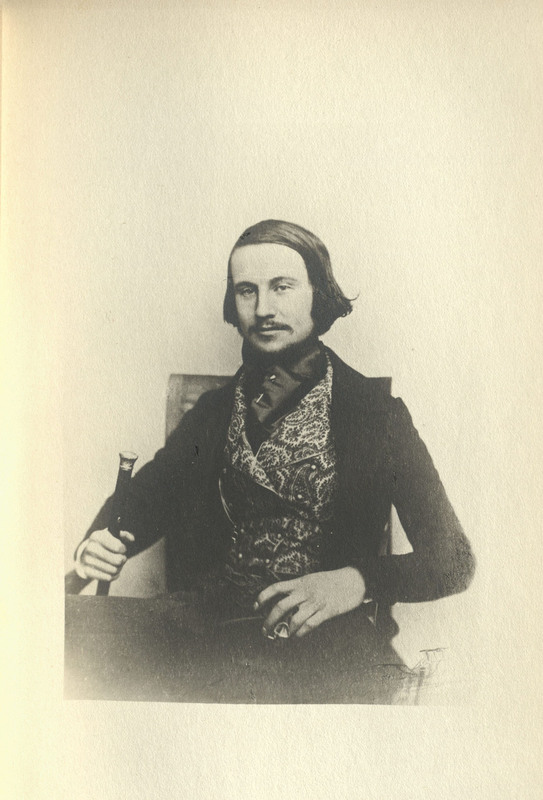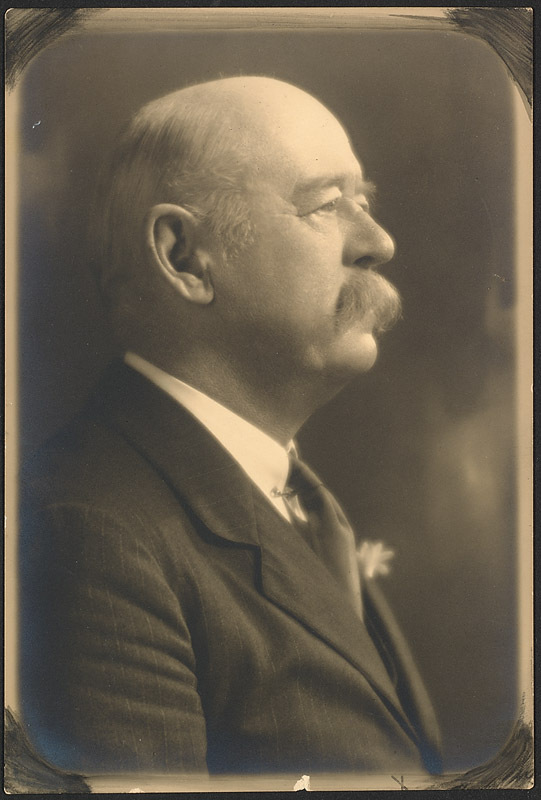Henry Jacob Bigelow & Oscar Wallis
Artist Oscar Wallis is a less documented figure than Warren’s contributor William Kaula and left behind few visible works outside of his medical watercolors. It’s known that Wallis worked exclusively with Henry Jacob Bigelow from 1848 to 1854 and the artist is described in Henry Jacob and William Sturgis Bigelow’s 1894 A Memoir of Henry Jacob Bigelow as “an artist of great skill and patience in drawing and coloring.”
In addition to the teaching watercolor partnership, Bigelow employed Wallis to illustrate a volume on surgical pathology. According to Bigelow’s Memoirs the two men worked mostly at night exploring tumor sections under the microscope. Wallis found capturing the varied colors and textures within the cut tumors difficult and practiced drawing sections of white and purple grapes to perfect his technique.
The volume was never published. French physician Hermann Lebert (1813-1878) produced a two volume illustrated Traité d'anatomie pathologique générale et spéciale ou Description et iconographie pathologique des alterations morbides tant liquides que solides observées dans le corps humain before the Bigelow-Wallis project was complete. Bigelow thought this work superior to his and abandoned his manuscript. Wallis’s drawings and Bigelow’s notes survive in the Center for the History of Medicine’s Henry Jacob Bigelow papers, 1840s-1856 (inclusive), 1848-1855 (bulk).
The Museum of Fine Arts, Boston maintains several of Wallis’s works. He also contributed lithographic work to Benjamin Champney's 1852 New England Scenery and Champney’s landscape scenes printed in George Bond's 1853 Map of the White Mountains. Two lithographs of shells by Wallis illustrate Louis Agassiz’s 1850 work Lake Superior.
Henry Jacob Bigelow was born on March 11, 1818 in Boston, Massachusetts. His father, Jacob Bigelow (1787-1879), was a well-known medical practitioner in the city. Bigelow entered Harvard College in 1833 at age fifteen, and graduated with a B.A. in 1837. He studied medicine with his father and attended Oliver Wendell Holmes’ (1809-1894) lectures at Dartmouth College. In 1838 Bigelow was appointed a house surgeon at the Massachusetts General Hospital. He traveled to Cuba in the early 1840s and returned to Boston to take his medical degree in 1841.
After completing his M.D., Bigelow traveled to Europe, studying medicine in Paris and London. He returned to Boston in 1844 to start his practice, and in that same year, wrote a Boylston Prize-winning essay on the relief of deformity and lameness by muscle division. In 1845 he was elected president of the Boylston Society and in 1846 was appointed Visiting Surgeon at the Massachusetts General Hospital. In 1849 Bigelow was appointed as the Professor of Surgery at Harvard Medical School.
Bigelow was a pathologist by training, but was active in a variety of other fields, including the popularizing of anesthesia by ether, revising the equipment and technique for lithotrity, and working with the anti-vivisection movement. He was a supporter of the claim of William Morton as the discoverer of anesthetic ether and wrote widely on the subject, favoring the immediate adoption of ether anesthetic in surgical operations.
Bigelow married Susan Sturgis in 1847, who died in 1853, three years after the birth of their only child, William Sturgis Bigelow. Henry Jacob Bigelow died in 1890 at his home in Newton, Massachusetts, several months after a severe fall.
In 1890 Bigelow presented his teaching watercolors and the smaller tumor lithographs to Harvard Medical School in the charge of Professor Reginald H. Fitz. Upon making the gift, Bigelow stipulated that each of the teaching watercolors be stamped with Wallis' name to ensure the artist received enduring credit for his work.
In his memorial of Bigelow in the November 27, 1900 edition of the Boston Medical and Surgical Journal, Fitz remarked,
"What these illustrations would have been is in part known to the generations of Dr. Bigelow's students, who have admired, each in their turn, the magnificent diagrams with which he illustrated his lectures on surgery. The beauty of some of these pictures is so conspicuous, in virtue of color and outline, that one forgets the repulsive nature of the subject, and simply admires the skill of the artist."
The collection was long held in the Department of Anatomy’s Warren Anatomical Museum until the department was finally closed in 1999. The works were then transferred to the Countway Library’s Center for the History of Medicine with the Warren Anatomical Museum in April of that year. At the time of their creation, Bigelow estimated Wallis’ work on the large teaching watercolors cost him approximately $6,000. The high cost seems to not have been much a deterrent to Bigelow. In his Memoirs, he remarked,
"Good illustration is invaluable; it is the real thing instead of words. I was so persuaded of this when I began to lecture that I had pictures made at any sacrifice of time and money. My diagrams were then the best in existence; so far as they went, they were useful." (76)



